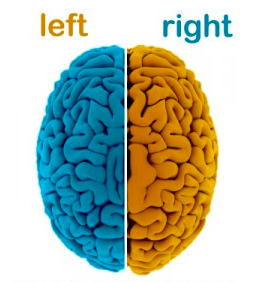The challenge of the modern string player is in many ways no different from Fortune 500 companies. We need to successfully evolve as creative musicians while doing something that will have value to the world around us. Otherwise we cannot survive. Every creative journey starts with a problem. It starts with a feeling of frustration, the dull ache of not being able to find the answer. We’ve worked hard but we’ve hit a wall. Jonah Leher, Imagine
For string players it may be the sense that despite having practiced and prepared for a career in music, they are unable to find work to survive. Most string players will do one of 2 things:
- Cultivate the necessary skills for those jobs that already exist like orchestra, a school position, solo, chamber music, even alternative styles.
- Strike out on ones own, whether it’s being self employed that one has created for oneself through creating a group, a school or gone after solo and modern playing opportunities.
It is this 2nd group of individuals that interests me most because in an attempt to build our own gig, it’s only natural to look at one others have done and hope that their successful steps will have a similar outcome. But there is one harsh reality that everyone must face. Regardless of how much we learn from others that have come before us, still we must create the path in front of us in a way that is true to ourselves. For some this may feel like a discouraging impasse. How to appeal to the masses? How to survive financially? What music and what venue and what ensemble arrangement and what combination of elements that can work together.
While this can feel like a frustrating impasse, the science of innovation and creativity has shown we actually need to have wrestled with a problem and lost. It is at such moments that the solution comes to us almost like a flash of lightning, thunderstruck. The question of course is how these insights happen? And what enables someone to transform a mental block into a breakthrough? How many have found that when you stop searching for an answer, it comes on it’s own, in completeness. What allows someone to transform a block into a breakthrough?
First let’s discuss creativity from a scientific standpoint, ie how the brain works and how insights and ‘inspiration’ actually happen. Mark Beeman asked these very same questions. He was a young scientist in the 1990’s at the National Institute of Health. At the time the generally held belief was that the right side of the brain lacked higher cognitive function and was essentially useless. But Beeman noticed that patients with right hemisphere damage nonetheless had higher cognitive issues even though the left hemisphere had been spared. For example these patients couldn’t understand jokes, sarcasm or metaphors. These patients had problems reading maps and couldn’t understand paintings.
 These problems lead Beeman to reconsider the function of the right brain, which had previously been considered useless. The disparity of problems also was perplexing to Beeman. What did understanding a joke have to do with navigation, and so forth? After considering this problem for awhile one possibility could connect these dots. Perhaps one of the functions is to find subtle connections between seemingly unrelated things. “The world is so complex that the brain has to process it in two different ways at the same time,” according to Beeman. “It needs to see the forest and the trees. The right hemisphere is what helps you see the forest.
These problems lead Beeman to reconsider the function of the right brain, which had previously been considered useless. The disparity of problems also was perplexing to Beeman. What did understanding a joke have to do with navigation, and so forth? After considering this problem for awhile one possibility could connect these dots. Perhaps one of the functions is to find subtle connections between seemingly unrelated things. “The world is so complex that the brain has to process it in two different ways at the same time,” according to Beeman. “It needs to see the forest and the trees. The right hemisphere is what helps you see the forest.
While the left hemisphere stores the literal meaning of words, the right side understands all the meanings that can’t be looked up in the dictionary. ‘When Shakespeare writes “Juliet is the sun” we know he isn’t saying his beloved is a massive ball of hydrogen.’ Jonah Lehrer
Then how does the brain understand this metaphor? We do so by understanding the underlying connections of their overlapping associations. For example just like the sun lights up the world, Juliet lights up Romeo’s life. This nuanced understanding of the qualities they have in common, is why Shakespeare was not suggesting Juliet is a gaseous ball of fire.
He found the brain began processing the problem using the left hemisphere, looking for the answers in all the obvious places. This process quickly became tiring to subjects and within a short time they gave up saying they were stumped. “Almost all the answers your brain comes up with are going to be wrong. There are just so many different connections to consider.It is at this juncture that we hit the ‘stumped phase’ or ‘artists block’ when there seems to be no answer and we’re ready to give up. But amazingly enough, this uncomfortable impasse is actually an important part of the creative process because they signal that we must try a new strategy.Instead of relying on the literal associations of the left brain we must try a different approach and this impasse signals to our brain that we must try a new approach. Artists too can learn from these scientific findings about creativity the next time they find themselves in an impasse.
Rozanna Weinberger
2/14/14
